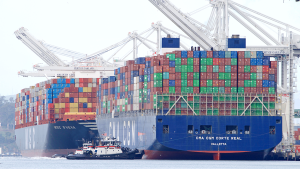The cement industry is at a crossroads as decarbonization is expected to take its toll, resulting in a significant decline in demand, according to a landmark paper published by the World Cement Association (WCA), which consists of producers, engineering firms and equipment suppliers.
“The cement industry is undergoing an unprecedented transformation,” explains WCA CEO Ian Riley, author of the paper. “As we move towards a decarbonized future, understanding the true demand for cement and clinker is critical to ensuring that policies, technologies and investments align with reality.”
The white paper delves into the global long-term outlook for the products and examines disruptive factors such as alternative materials, supply chain optimization and clinker-free technologies.
“This white paper aims to provide industry leaders and policymakers with the clarity needed to plan effectively and sustainably,” says Riley.
The report challenges prevailing forecasts and projects demand for cement and clinker will dip, mainly due to the rise of timber, greater use of admixtures, the move towards decarbonization of the industry as well as design practices that will reduce the concrete used.
The paper notes over the next 25 years many of the factors that will have a large impact by 2050 are still in an early stage so timing of their impact is uncertain.
It projects global cement demand will decline to 2.7 billion tonnes per annum (tpa) by 2050, down from 4.2 billion in 2020, and much lower than current forecasts. Demand for clinker — the main ingredient in cement — is expected to decline at an even steeper rate to 1.6 billion.
An earlier report by the International Energy Agency indicated global cement demand would grow to 4.7 billion tonnes by 2050, a 12-per-cent increase from 2020 levels. However, the WCA estimates in 2024 cement demand already showed a reduction of nine per cent from 2020 and the agency expects a further decline of 22 per cent by 2050.
According to the paper, timber has replaced concrete and steel in many highrise buildings but limitations on the supply of timber are expected to curb its growth.
Many companies are also exploring and developing non-clinker binder systems, mainly based on geopolymer concretes with steel slag, mine tailings and other industrial byproducts. The paper states these are likely to be accepted initially for non-structural and sub-surface applications, but are estimated to amount to no more than half of all concrete used.
In China, which represents 57 per cent of world consumption, cement demand has fallen almost 25 per cent from 2.4 billion tonnes in 2020 to 1.8 billion tonnes in 2024, a decline of seven per cent per annum. Demand is expected to continue to fall by 3.9 per cent per annum to 1.2 billion tonnes in 2035 and then at a slower 1.6-per-cent per annum pace to 0.9 million tonnes by 2050.
Cement demand has also dropped rapidly in Japan and Taiwan, from peaks of 700 and 1,000 kilograms per capita, respectively, in 2020 to about half that amount in 2024. In South Korea, demand has dropped from a peak of almost 1,400 kilograms per capita to 850 over the same periods.
Demand for cement in North America and Oceania is expected to rise due to population growth, but declines are expected in Northeast Asia and Western Europe due to population declines.
As a result, the need for carbon capture and storage initiatives will also consequently be reduced, impacting investment and policy priorities of producers.
The association is inviting its members and the broader industry to engage with the white paper’s findings and come together to collaborate on sustainable solutions.
“The cement industry faces change on a scale it has not seen in the past and no forecast can be considered definitive,” Riley writes. “However, it is clear that demand for cement and especially clinker will decline substantially.
“The decline of clinker demand to perhaps half of current levels is a huge challenge for the cement industry. Most of the capital invested in cement plants is in the kiln systems to produce clinker.”
Global capacity utilization of kilns is around 65 per cent and taking into account expansions that are already being considered, the industry can expect at least 500 million tpa of new capacity to be added, mostly in emerging markets. By 2050, kiln utilization could be just 30 per cent.
There is a bright spot, though, as Riley argues the changes could also present a big opportunity.
“Concrete is used in huge quantities because it is an excellent, long-lasting material and because it is very cheap,” he states. “The future offers the prospect of greater customization, not only to reduce embodied carbon, but also to tailor concretes to the application requirements. This is a future in which the agile and forward-looking will prosper.”






Recent Comments